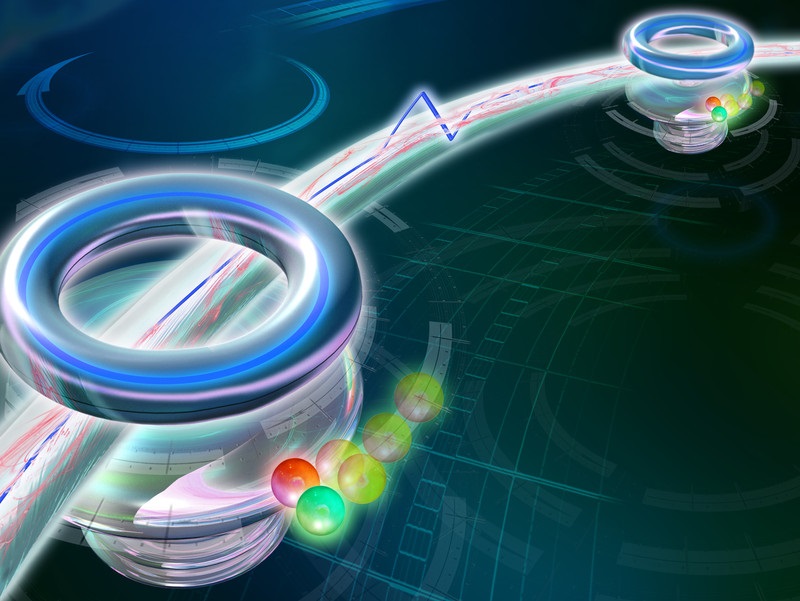2017-03-29
Nowadays we communicate via radio signals and send electrical pulses through long cables. This could change soon, however: Scientists have been working intensely on developing methods for quantum information transfer. This would enable tap-proof data transfer or, one day, even the linking of quantum computers.
Quantum information transfer requires reliable information transfer from one quantum system to the other, which is extremely difficult to achieve. Independently, two research teams – one at the University of Innsbruck and the other at TU Wien (Vienna) - have now developed a new quantum communication protocol. This protocol enables reliable quantum communication even under the presence of contaminating noise. Both research groups work with the same basic concept: To make the protocol immune to the noise, they add an additional element, a so-called quantum oscillator, at both ends of the quantum channel.
Reliable data transfer
Scientists have conducted quantum communication experiments for a long time. “Researchers presented a quantum teleportation protocol already in the 1990s. It permits transferring the state of one quantum system to another by using optical photons,” says Benoit Vermersch, Postdoc in Peter Zoller’s group at the University of Innsbruck. This works also over great distances but one has to accept that a lot of the photons are lost and only a tiny fraction reaches the detector.
“Our goal was to find a way to reliably transfer a quantum state from one place to the other without having to do it several times to make it work,” explains Peter Rabl from the Atominstitut, TU Wien.
Superconducting qubits, in particular, are promising elements for future quantum technologies. They are tiny circuits that can assume two different states at the same time. Contrary to conventional light switches that can be either turned on or turned off, the laws of quantum physics allow a qubit to assume any combination of these states, which is called quantum superposition.
To transfer this quantum state from one superconducting qubit to another requires microwave photons, which are already used for classic signal transfer. Reliably transferring quantum information via a microwave regime has been considered impossible as the constant thermal noise completely superposes the weaker quantum signal.
New transfer protocol
The two research groups have now shown that these obstacles are not impossible to overcome as previously assumed. In collaboration with teams from Harvard and Yale (USA) they have been able to develop a transfer protocol that is immune to the inevitable noise.
“Our approach is to add another quantum system – a microwave oscillator – as a mediator at both ends of the protocol to couple the qubits instead of coupling them directly to the microwave channel or waveguide,” explains Rabl.
“We cannot prevent the thermal noise that develops in the quantum channel,” says Benoit Vermersch. “What is important is that this noise affects both oscillators on both ends in the same way. Therefore, we are able to exactly separate the detrimental effect of the noise from the weaker quantum signal through precise coupling to the waveguide.”
“According to our calculations, we may connect qubits over several hundred meters with this protocol,” says Peter Rabl. “We would still have to cool the channels but in the long term it will be technologically feasible to link buildings or even cities in a quantum physical manner via microwave channels.”
Publications
Quantum State Transfer via Noisy Photonic and Phononic. Waveguides. B. Vermersch, P.-O. Guimond, H. Pichler, and P. Zoller. Phys. Rev. Lett. 118, 133601
Intracity Quantum Communication via Thermal Microwave Networks. Ze-Liang Xiang, Mengzhen Zhang, Liang Jiang, and Peter Rabl. Phys. Rev. X 7, 011035















